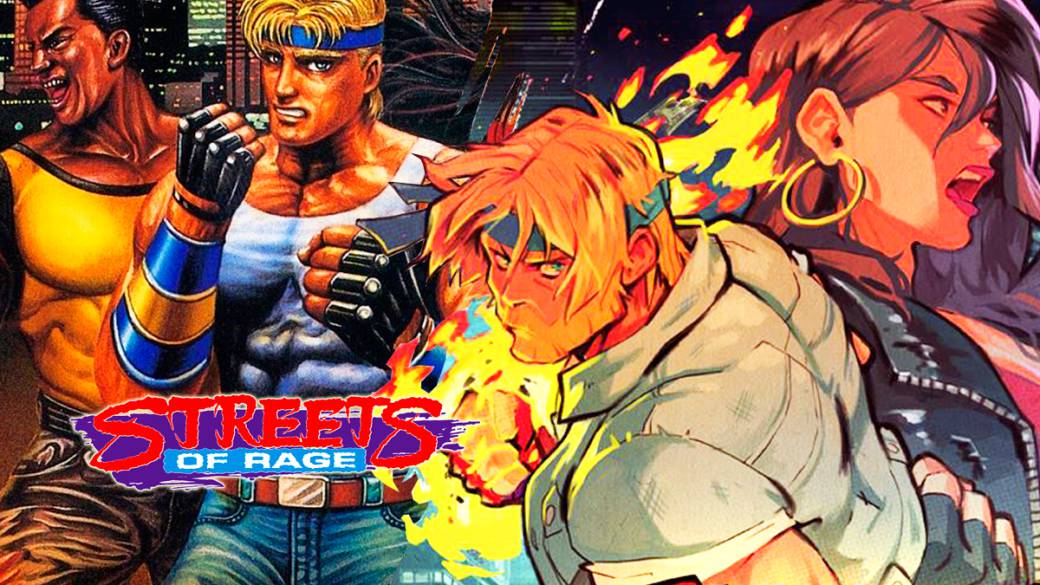
The classic Mega Drive saga returns with a completely new installment developed for current systems, PS4, Xbox One, Nintendo Switch, and PC.
Twenty five years. That's the time that has passed since Streets of Rage 3 went on sale on Mega Drive. The saga developed its three main chapters in a very short period of time, from 1991 to 1994. From then on, silence, except for the conversions that were made to other systems. Fans of the franchise received a pleasant surprise in August 2018, when DotEmu, a studio specializing in retro titles, officially announced that it was working on a new chapter, Streets of Rage 4 (FreeGameTips prints).
The game follows classic guidelines and opts for a two-dimensional graphic style adapted to the current era. It is not intended to overmodernise the saga, as designer Jordi Asensio commented in an official video: "You must understand the frustrations of that period of time and discover if they were due to technical limitations or your own ideas."
Streets of Rage 4 is a DotEmu idea in collaboration with Sega. The team works alongside Lizardscube (Wonderboy III: The Dragon's Trap) and Guard Crush Games (Streets of Fury) to shape the new production, in which Sega AM7 is not present, the studio that brought the original trilogy to Mega Drive. . Also known as Team Shinobi, the developer was renamed Wow Entertainment and went through several phases before being diluted as a studio. The changes in Sega, which began as a result of the Dreamcast disaster, did not end with it, since its last video game, The House of the Dead 4, dates from 2005 and was released on recreational and PlayStation 3.
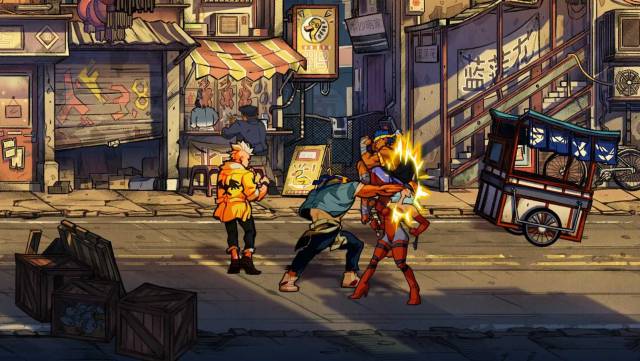
The return of the original composers
One of the questions most asked by fans was whether the developers would have the baton of Yuzo Koshiro and Motohiro Kawashima, original composers. The answer came from DotEmu, who after a period of unknown, confirmed that both would return as main authors of the soundtrack. They have not done it alone, as Yoko Shimomura (Kingdom Hearts, Final Fantasy XV, Street Fighter 2), Hideki Nagamuma (Jet Set Radio, Sega Rally, Super Monkey Ball) and Keiji Yamagishi (Ninja Gaiden, Tecmo Bow) have contributed some pieces.
But like any saga, it is his past that has brought him to the present. This reality is even more palpable when we are faced with a title like Streets of Rage, which has been fallow for more than two decades, which has fueled a nostalgia that can be nourished, although that may be a double-edged sword. The balance between classic and contemporary must be well balanced.
In today's generations, developing high-budget titles takes years. As the technology has become more sophisticated, the teams have expanded, to the point that the same company may have studies in multiple parts of the globe working on the same product. For example, each installment of Assassin's Creed is made by a core team, but is supported by many of the Ubisoft studios, which perform different tasks to assemble each of the elements in the chain. In the first half of the nineties, things were quite different. The studios were much smaller and the production generally lasted less time than in the contemporary era.
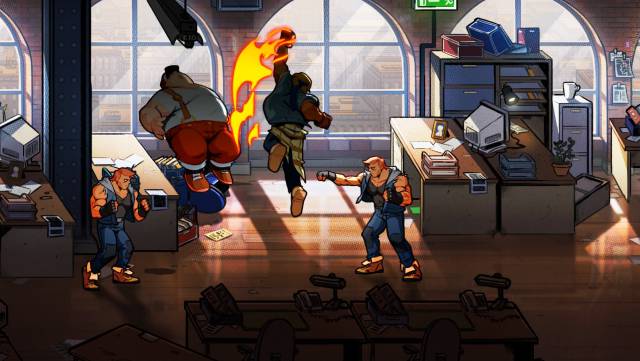
A few notes on the beginnings of Streets of Rage
Streets of Rage is the son of the nineties, which is also evident through its soundtrack. Through an interview, the composer Yuzo Koshiro reviews the influences that led him to write the scores as they were in the final version. “I started writing the music for Streets of Rage in the late 1990s. I regularly go to dance clubs, and at the time, fashion was shifting from eurobeat to house music. Since Streets of Rage is a fighting game, I put a lot of emphasis on music being energetic, so I made the decision to write rock songs. In the end, once I tried house music it all clicked and I thought it sounded really good. "
Ayano Koshiro (sister of composer Yuzo Koshiro), was the art director for Streets of Rage 2. In an interview published on the Ancient blog, the developer remembers that the creative process of the video game lasted only six months. “I think the planning was done in less than a week. We started when the first Streets of Rage was ending, ”he recalls. Koshiro was the architect of all the movements and special attacks of each character, outlined first in his drawings. His interest in combat was reflected in the video game, which looked askance at one of the great fighting titles, nothing more and nothing less than Street Fighter II. Capcom's work revolutionized the genre and captivated the Koshiro brothers, who purchased an arcade machine and placed it in the office. “During development, I spent half my time obsessed with VS fighting games. and the other half designing Streets of Rage 2. Times have changed ”; But then this type of fighting game "was the most important thing", so he thought about including "those elements in Streets of Rage 2". The idea was to implement a versus mode, an aspect that they could not introduce because they ran out of time.
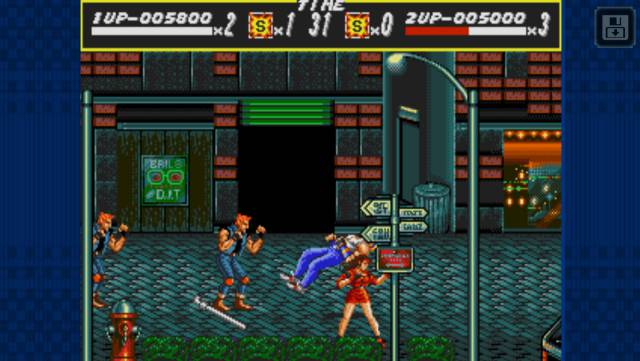
"My brother and I liked the way they fought in Street Fighter II," which sparked "a shared vision for fighting in Streets of Rage 2: two punches, followed by a direct hit, then some heavy attack. , And the enemy flies away! ”, He stresses. They also wondered which fighters could be interesting for the sequel and which not. "Adam didn't have a real specialty, so we ruled it out." In fact, Ayano Koshiro admits that she was the one who decided that this character would not continue after, of course, talking about it with Sega. In this way, he was able to improve others like Axel or Blaze.
"Since we were going to have the same amount of work in any case, we'd rather add someone new, because you always want to do something cool in a sequel, right?" he asks himself rhetorically. “The Streets of Rage 2 character sprites got bigger, so we wanted them to have more variety of attacks and moves. Creating a new character was the best way to do it, "he says. Although Adam was dropped as a controllable lead, he did appear as part of the story. It occurred to them that maybe Axel and Blaze had to rescue him, and from there they devised their little brother, Sammy. “It was going to be very manageable, the complicated type. Using it requires some skill. We designed him as the character experienced players would want to handle. "
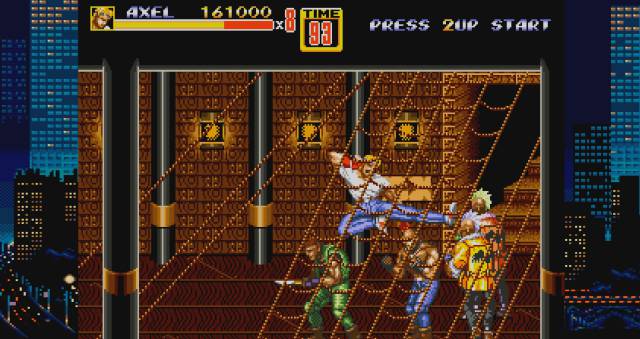
Once they decided the fate and nature of each of the protagonists, “their movements emerged organically. Axel and Blaze were normal characters, so that went well. We opted for the striking and colorful movements for Sammy. Since Max was a caster-type character, we settled on fighter moves. ” According to Koshiro, almost all of her movements were created by her. “I had to think of methods to give variety to the set of techniques. I was very inspired by VS fighting games. of that time ”.
Another thing that has changed compared to current times is that companies were very careful to highlight possible religious elements in their video games, as well as other issues that could clash a lot today, given the change in mentality with the generational step . “I remember that in the first Streets of Rage, Sega said that in the international market it was a problem that the female characters were beaten in the game. This time (in Streets of Rage 2) it was no longer an issue. But I remember that they censored an image of Mr. X in the final scene. I think they removed the cigarette he was smoking. " He adds: “Also, this may not be closely related to Streets of Rage, but everything that was connected to religion was a problem. If the frame of a window looked too much like a crucifix, for example, we were asked that there be no enemies fighting in front of it ”.
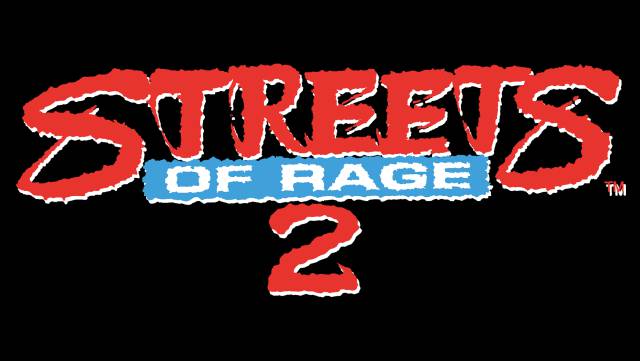
In search of the essence
Three decades after Streets of Rage development began, what are the keys to the fourth installment? Why revive a series like this? Cyrille Imbert, CEO of DotEmu, reflects on this in an interview published on PC Invasion. Streets of Rage has been one of my favorite childhood games as a sega kid, and Ben (Fiquet, Lizardscube co-founder and creative director of the game) loves the saga too.
During the Wonder Boy: The Dragon's Trap launch party in the office, we started talking about what we should do next and Ben had already prepared a series of nice designs. We both agreed, so I had to take the step and make it happen. ” From saying to doing there is a stretch, but given the good result they reaped with Wonder Boy, Sega did not put up obstacles and gave the green light. "One of the first things I did was talk to Sega. I traveled to Tokyo with Ben's first arts and the concept of the sequel. They loved the idea, and seeing what we had done with Wonder Boy, it didn't take us long to convince them. ”
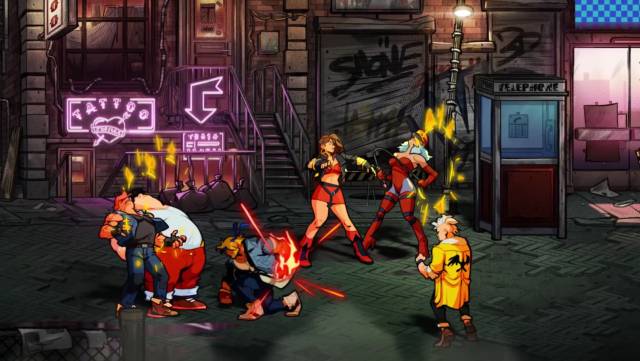
Ben Fiquet explains that he spent a lot of time trying to find a style that would fit with Streets of Rage: "I wanted to have a nice hand-drawn 2D, but at the same time, I wanted to give it the touch of the original pixel art." He says he uses different graphic tricks, but stays true to the science fiction style of the originals. Traditional animation gives characters a "fresh and attractive" look during combat.
The story takes place ten years after the events narrated in the third installment. In that time, the city has fallen back into the hands of an evil organization, so the heroes will have to conquer the streets again to bring order. Paradoxically, the same character Ayano Koshiro dropped for his title is back in the fourth chapter. We are talking, of course, about Adam. “The reception has been incredible. It has been very frustrating for us, because in all the previous announcements, people were constantly asking about him. We wanted to keep the surprise while we waited to have the final graphics to show it in all its glory, "says Cyrille.

And how did they convince Yuzo Koshiro and the other composers to join the project? "From the beginning, we were clear that music should be one of the pillars of Streets of Rage 4," he begins. "To be truly special, we needed an exceptional group of artists, so Koshiro and Kawashima had to be part of this adventure." Through Alexander Aniel of Bravewave, they had the opportunity to contact them. "We still had to convince these talented people to work with us, but with our passion and the concept we had in mind we managed to make it happen."
According to Cyrille, Koshiro was surprised to hear that a French studio was interested in resurrecting Steets of Rage. "I think he was a little worried at first which is completely understandable, since the saga is surely very important in his career." However, they met in Paris and taught him the beginning concepts and an initial demo. "I was very excited. With patience and hard work we beg to establish mutual trust. We are proud to be able to work with Koshiro-san and Kawashina-sam, it is like a childhood dream come true.
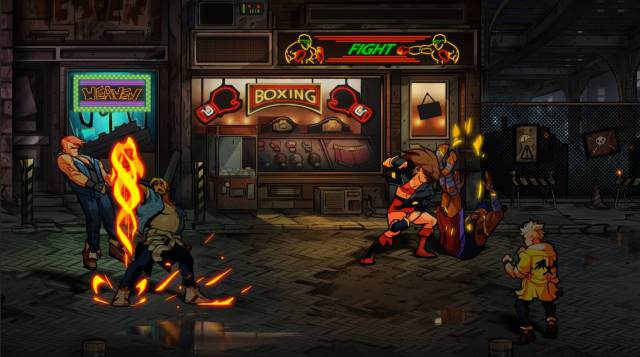
The redesign of the characters
Streets of Rage 4 has 17 selectable characters. On the official PlayStation blog, Ben Fiquet publishes a text that roughly narrates the challenges of redesigning the most iconic characters in the saga. With Blaze, he started from the original sprites: “One of its characteristics is the red color scheme, accentuated by the miniskirt and the fitted top. It was important to maintain these attributes, as they not only represent the character, but also evoke the memories of many players around the world, "he says.
Due to technical limitations back then, “the games did not have many frames per second. In contrast, in Streets of Rage 4, each character has 1,000 frames. "In addition, we have a wide variety of enemies that have between 300 and 400 frames each. And everything is drawn by hand, frame by frame, in Photoshop. ” As for the special movements, he introduced more visual effects to make them more impressive. In his words, his style is more fluid, while the use of blue lotus special effects "and shapes reminiscent of a mandala" gives his movements a personality of their own.
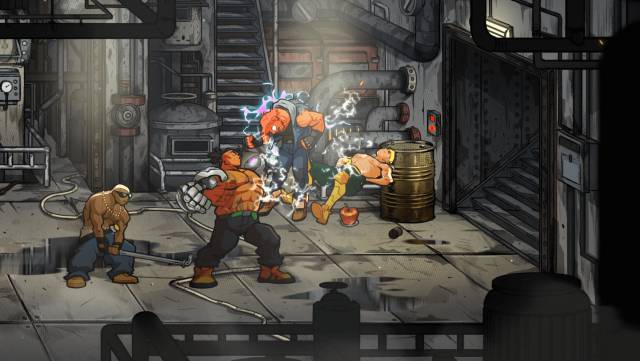
Adam's case was more complicated because he was only controllable in the first game, so there was less material. “I tried to keep the shoulder pads, but without success: they were too eighties. So I explored other ideas… The glasses make it look more mysterious and remind me of the look of the old sprite, where the eyes were barely distinguishable. ” Since Adam did not have a wide variety of movements, he had to create new ones. “One of his traits is the ability to slide, and the green color of his visual effects was a good choice that makes him stand out. I tried to make him strong and energetic, and since Axel has a dragon in a defensive move, I thought the wolf was perfect. "
Soon, all of these characters will be reunited again along with new fighters joining the fray. The reconquest of each of the alleys will depend on them. They will have to fight their way through with punches and kicks. That has not changed.

